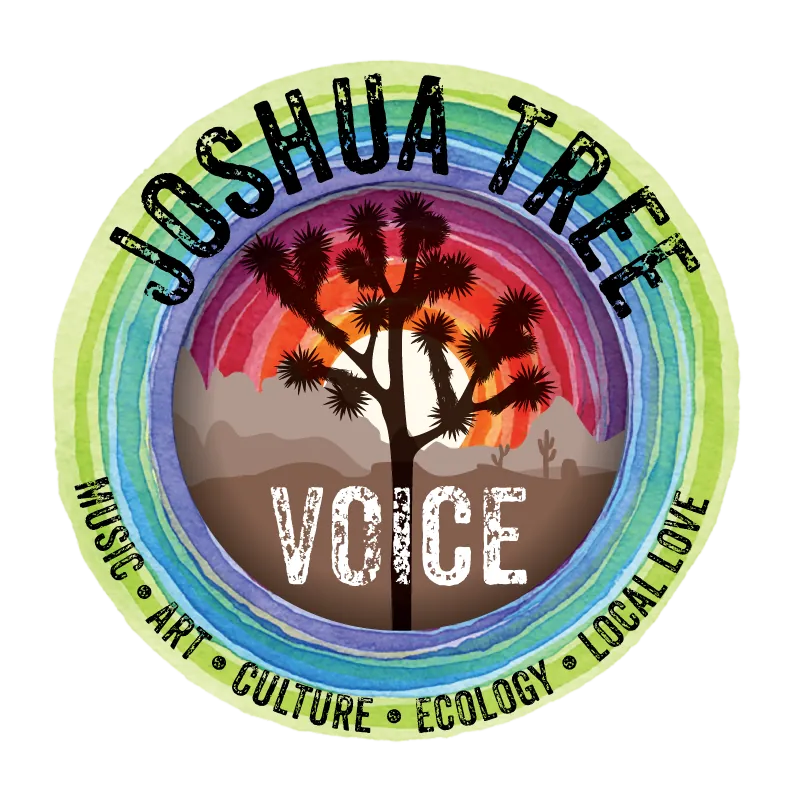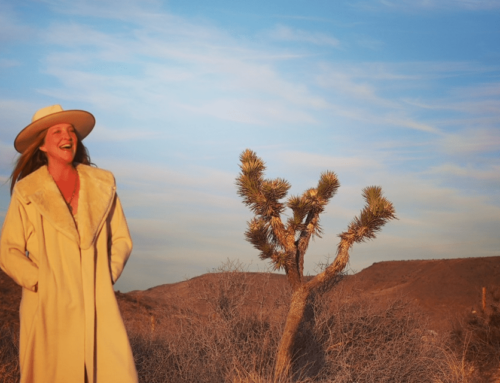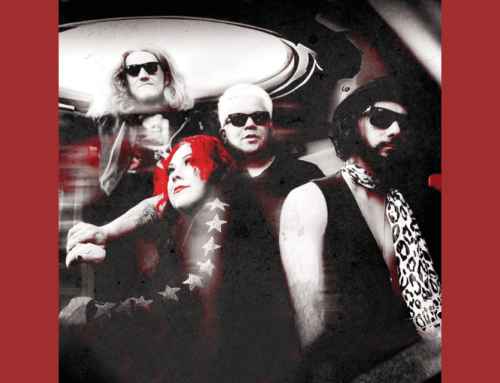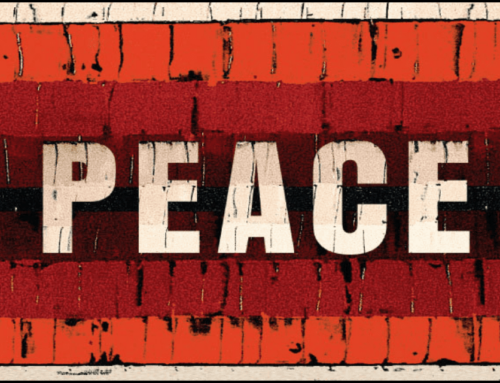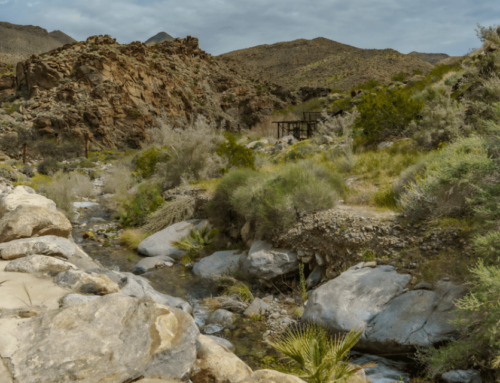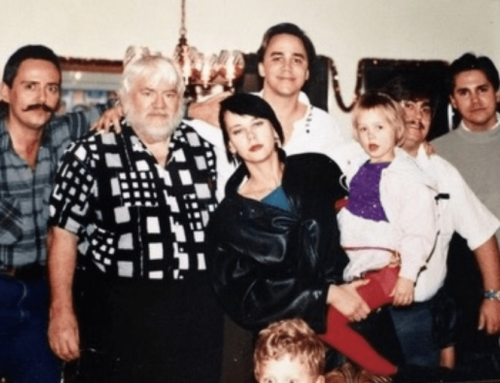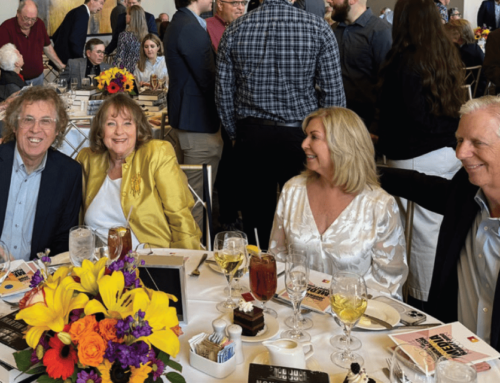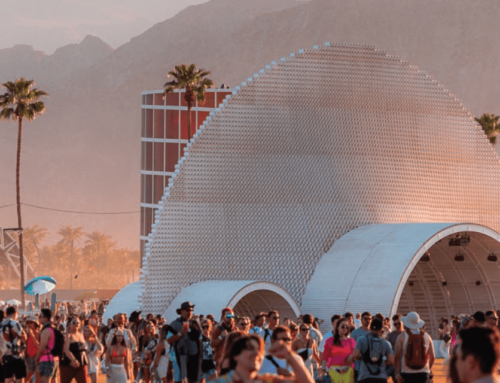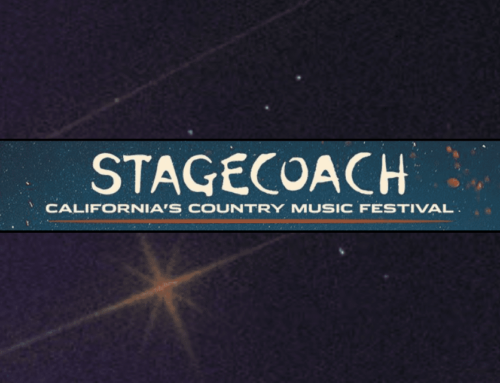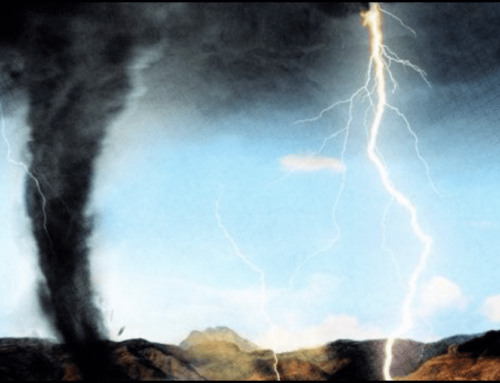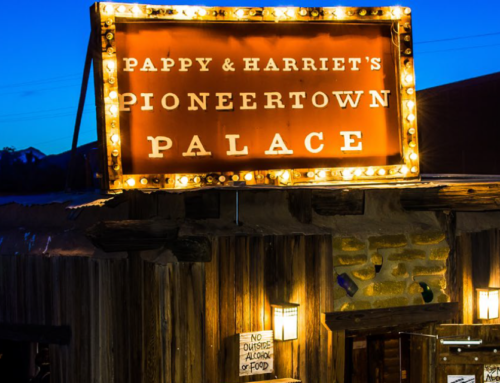
Sunny Atema Interweaving Art, Music, and Healing into the High Desert
By Jennifer Lewis
Cover Photo: Jay Carroll
Sunny Atema’s creative work touches almost every
corner of the high desert. From her musical project, Wildlife Freeway, her abstract paintings, her yoga classes at Cedar and Sage in Yucca Valley, to giving Animal Medicine Card readings at Time Echo Vintage on Saturdays at The Farmer’s Market, her contributions enrich the lives of tourists and locals alike. An interaction with Sunny leaves a lasting impression beyond the exhibition or performance.
Often accompanied by her 3 ⁄ 4-sized upright piano, Wildlife Freeway has been performed at intimate gatherings like Palo Xanto’s Homestead Sessions and for larger audiences like The Joshua Tree Music Festival. Her music is strange and beautiful. It pushes the boundaries of traditional song structure with unpredictable turns and unusual melodies. Her earnest lyrics lilt over dynamic piano and two-chord guitar songs, delivering an emotional resonance that leaves listeners teary-eyed. In February 2020, she debuted her first album, “Sunny,” produced by Alex Elbert, and she directed several of her own cinematic music videos which can be found on YouTube.
Sunny’s intricate paintings have been exhibited everywhere from local stores like Milk Thistle in Yucca Valley to The Glass Outhouse Gallery in Wonder Valley. In June 2022, I met Sunny at the opening of DESTINATION, her 90-painting exhibition at Super X Gallery in Pioneertown. I was mesmerized by her extensive body of work, the sheer magnitude of quality output across multiple mediums, and her ability to pull the audience into the present moment with her.
JTV: “How do you use your art and music to encourage people to break free from distractions and connect with what’s in front of them?”
Atema: “What I want to share in each painting piece and musical performance is an invitation to wake up from some outdated performance placed on us in childhood or anytime, that we never stopped inhabiting out of fear, ignorance, or laziness. To wake up and realize the ‘destination’ is in the ever-passing presence of the moment.”
JTV: “You moved from New York to Joshua Tree eight years ago. What inspires you about living in the desert?”
Atema: “One of the reasons I love the desert and our people here—there are many like me—who burn with creation, with a particular fervor. Living alongside them in the wide desert is so comforting to me. We see each other a few times a year because we are manic maker recluses, popping out for sharing and shows. Peeping the magic around me is like fuel and comfort. Because it’s not easy! Lord knows, truly making a living by your art and craft is hard to swing. I live by a ton of little mottos that are like footholds for my consciousness, and the one my yoga students hear from me a lot is, ‘Discipline is freedom.’ It sounds harsh and maybe it is, but the artists and seekers I love embody that notion. I love being able to count on myself to show up. To sit at the piano bench day-after-ever-loving-day, to set up the studio, mix the paint, roll out the mat, and type it out.”
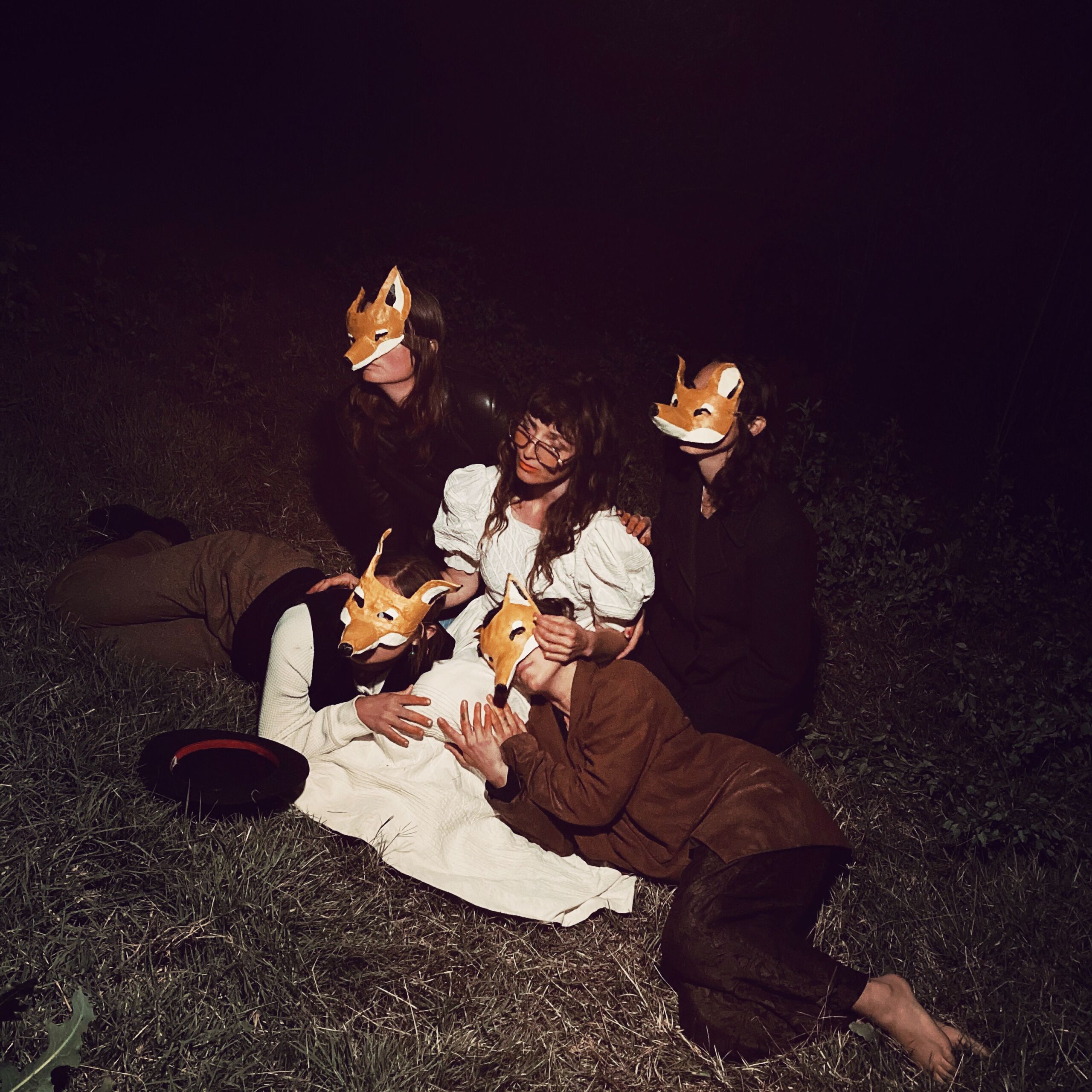
Video still: from “Fox” Directed by Atema
“Another thing I really love about the Joshua Tree scene is that it’s not about what kind of music you play. It’s the only place that I know that is not a genre specific music scene. You can go out and experience three different types of music on the same bill. There’s nothing like that!”
JTV: “You are quite accomplished on the piano. You have your own unique style. Are you self-taught?
Atema: “Yes! I say that I played piano before I walked. I’m so grateful that my mom and dad each had pianos and that I could play almost anytime. I took Suzuki cello for years and played only by ear, when they wanted me to read notes, I pretended to, but I kept playing by ear.”
JTV: “I’ve noticed that even when a venue has a piano, you’d rather bring in your own. Can you talk about the connection you have with your piano and the trust that you have in the community to help you lovingly transport it in and out of the venue.”
Atema: “I get that question all the time; ‘How do you move it?’ I always say, ‘With help!’ I truly wish I had a little video or picture of everyone who has ever helped me move Piano. What a beautiful movie it would be. So many generous souls lending me a hand. If you have ever helped me move Piano, thank you again, you are definitely going to heaven.”
JTV: “I also remember a time at Giant Rock Meeting Room when you improvised a song on the spot. That’s when I realized how gifted you were with making up melodies. When you are creating music, what comes first? The melody? The composition? The lyrics? Do you write on the piano?”
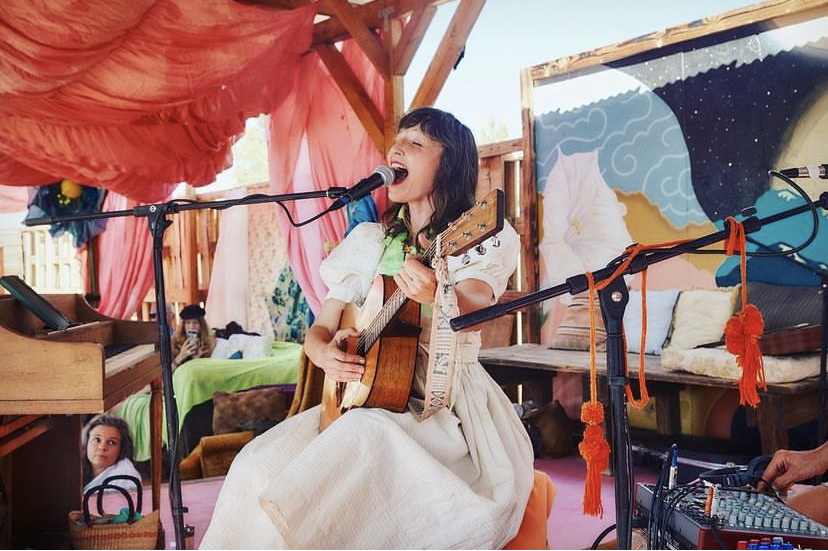
Photo: Carly Foulkes
Atema: “I’m not sure, how, really. I am made of songs. I can write and compose a song right now at this moment. I sometimes think of all the songs that don’t get born because I’m just not singing. Or of the piano composition conversations that are hovering in the air waiting for me to sit at the bench and give them life.”
“I am made of music (in the form of sounds and color). I believe Yoda when he says, ‘There is no try, only do.’ Likewise, I say there is no practice, only presence. Presence day after day looks like practice. I am a strange musician, and there was a chapter on my early path when I was coming out of the musical closet in San Francisco. At the time, I believed only in singing songs created at that moment because no other time exists.”
“Why sing songs about the past, written in the past, when the present moment is the only place we reside, a place so splendiferous and magical that to not sing about the actual present seemed to ignore what was all around us? Why trade it for a projection of the past?”
“So, as a formerly shy painter and secret musician, I would step out to face my fears. I would literally get up on stage at crowded open mics and freestyle whatever came to me with a borrowed guitar. Eventually, I made peace with recreating moments into songs, and now I love getting into the minutia of composing. All the patterns we create don’t need to reinvent the wheel every time. We can use each note or chord like the tool it is, and get skilled with the tools. But without jazz, without that spontaneity and unpredictability injected into parts of the song, its bland potatoes – sounds but not music. Music is a bridge that brings you somewhere.”
Discover more about the artist’s past and upcoming art projects on Instagram @wildlifefreeway.
